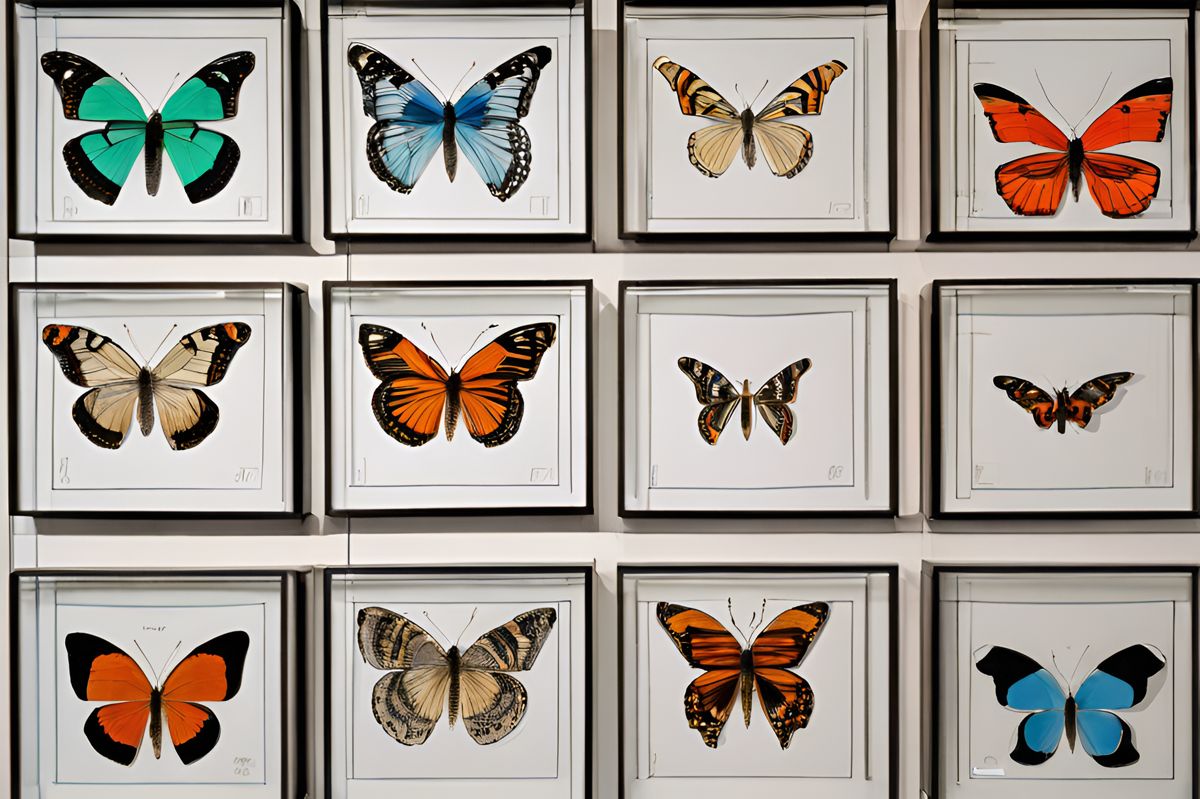The Leeds Discovery Centre’s butterfly collection showcases the stunning beauty of nature and the historical significance of insect specimen collection. With rare species like the Blue Morpho and Sloane’s Urania moth, the centre offers educational tours emphasizing the importance of conservation and protecting vulnerable species.
What does the Leeds Discovery Centre’s butterfly collection represent?
The Leeds Discovery Centre’s butterfly collection embodies the beauty of nature, the history of insect specimen collection, and the vital importance of conservation. It features rare species like the Blue Morpho and specimens like Sloane’s Urania moth, offering educational tours that stress the significance of protecting our planet and its vulnerable species.
Rare and Beautiful: The Butterflies of Leeds Discovery Centre
Leeds Discovery Centre stands as a proud custodian of nature’s delicate artistry. Housing hundreds of butterfly species, some of which are counted among the rarest in the world, the centre offers a glimpse into the kaleidoscopic beauty that has captivated humans for centuries. These specimens, collected by intrepid explorers and esteemed scientists over a century ago, represent a historical journey through our planet’s rich biodiversity.
A significant part of the collection is a breathtaking example of the Blue Morpho butterfly. With wings spanning five to eight inches, it is one of the largest butterflies known. The Blue Morpho’s vivid azure hue is not a pigment but the result of light reflecting off microscopic scales on their wings, a natural wonder that illustrates the complex beauty of these creatures. This is just one of the many natural marvels awaiting visitors at the Leeds Discovery Centre.
In preparation for the public’s engagement, experts are meticulously counting and preserving each specimen. The centre’s commitment to conservation extends to offering behind-the-scenes tours during the school half-term holidays. These tours promise to be a treasure trove of knowledge, showcasing not only the butterflies’ splendor but also the historical context of their collection.
A Journey Through Time and Conservation
The Leeds Discovery Centre does not just serve as a window to the aesthetic wonders of these insects; it is also a mirror reflecting the pastimes of a bygone era. The collection features Sloane’s Urania, an iridescent moth named after Sir Hans Sloane, whose contributions laid the foundations for the British Museum. This now-extinct species, with its radiant red, blue, and green markings, hails from Jamaica and is a stark reminder of the vulnerability of these species and their habitats.
The centre’s array of Rajah Brooke’s birdwings, resplendent in electric green and black, tells a tale of modern conservation efforts. These specimens, originating from the lush rainforests of Southeast Asia, were seized from smugglers, highlighting the ongoing battle against illegal wildlife trade. Their presence in the collection is not just an exhibit but a statement against the exploitation of nature’s treasures.
Clare Brown, the curator of natural sciences at Leeds Museums and Galleries, eloquently captures the essence of the collection:
“Butterflies and moths are among the most visually stunning insects in the world, and you can clearly see from the scope and beauty of our collection how much they have fascinated humans through the ages.”
The collection charts the history of animal and insect specimen collection, once a widespread pursuit among Western explorers, which has evolved in light of a greater understanding of its impact on ecosystems.
Education, Conservation, and the Community
The role of the Leeds Discovery Centre transcends the mere display of exotic specimens. It serves as an educational hub, guiding the community towards a deeper understanding of the natural world and our place within it. Councillor Jonathan Pryor, deputy leader and executive member for economy, culture, and education at Leeds City Council, emphasizes the significance of the collection in fostering awareness:
“Our world-class museums and galleries collection includes some incredible examples of animals and insects from around the world. This gives visitors the opportunity to both learn about them and to consider the impact our actions, collectively and individually, have on the world around us and how we can better protect our planet and its vulnerable species.”
The Centre’s efforts to engage the public are evident in the free, bookable behind-the-scenes tours available over the February half-term week. These tours do not only showcase the collection but also underscore the importance of conservation and the ethical acquisition of specimens.
For those interested in participating in this unique educational experience, details about tour times and booking procedures can be found on Leeds Discovery Centre’s website. This opportunity presents a unique chance for visitors to delve into the intricate world of these insects, their history, and the ongoing efforts to preserve both the species and the knowledge they represent.
The Leeds Discovery Centre’s butterfly collection is more than just an exhibition; it is a testament to the beauty of our natural world, the changing tides of human understanding, and the critical importance of conservation. Through education and engagement, the centre aims to inspire a collective effort to safeguard these fragile wonders for future generations.
- The Leeds Discovery Centre’s butterfly collection showcases the stunning beauty of nature and the historical significance of insect specimen collection.
- The collection features rare species like the Blue Morpho and Sloane’s Urania moth, emphasizing the importance of conservation and protecting vulnerable species.
- The collection represents a historical journey through our planet’s rich biodiversity, collected by explorers and scientists over a century ago.
- The centre offers behind-the-scenes tours that showcase the butterflies’ splendor and the historical context of their collection.
- The Leeds Discovery Centre serves as an educational hub, fostering awareness and understanding of the natural world and the importance of conservation.
